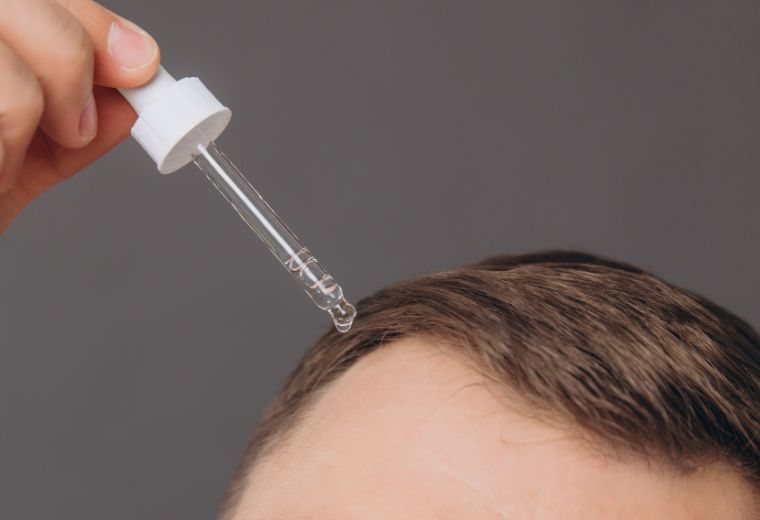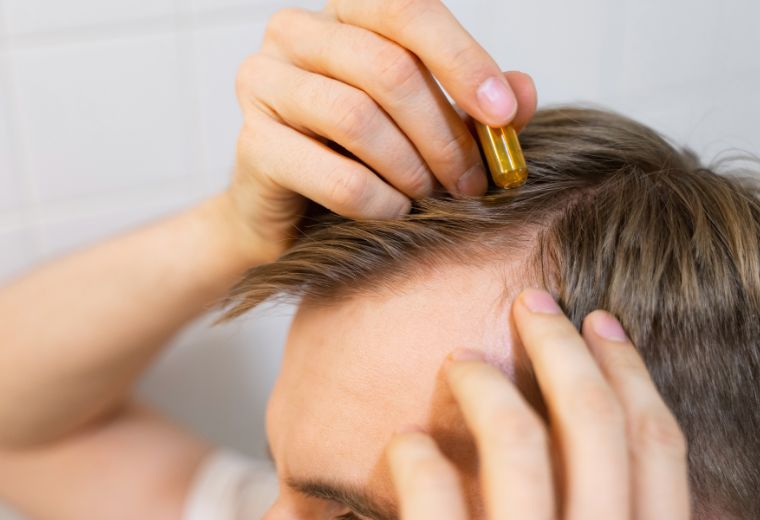Understanding Hair Loss in Men
Hair loss in men is a common condition, often referred to as male pattern baldness or androgenetic alopecia. It is characterised by a progressive thinning of hair on the scalp, typically starting from the hairline and crown. This type of hair loss is largely influenced by genetic factors and hormonal changes, particularly the sensitivity of hair follicles to dihydrotestosterone (DHT), a derivative of testosterone.
There are several types of hair loss, but androgenetic alopecia is the most prevalent, accounting for over 95% of cases in men. Other forms of hair loss include alopecia areata, an autoimmune condition that leads to patchy hair loss, and telogen effluvium, which is often temporary and triggered by stress or other factors like illness.
Hair loss can begin as early as the late teens or early 20s, with around 20% of men experiencing visible hair loss by the age of 20, and 50% by the age of 50. The prevalence of hair loss increases with age, and it affects nearly two-thirds of men by the time they reach 60 years old.
Cause of Hair Loss in Men
Hair loss in men is a multifaceted condition influenced by several factors, including genetics, hormones, lifestyle, and underlying medical conditions.
Genetic Factors
Genetics play a pivotal role in male hair loss, particularly in cases of androgenetic alopecia, commonly known as male pattern baldness. This type of hair loss is hereditary and is influenced by genes inherited from both parents, though the maternal side is often more influential. Genetic predisposition determines how sensitive your hair follicles are to dihydrotestosterone (DHT), a hormone that causes hair follicles to shrink and eventually stop producing hair.
Hormonal Influences
Hormonal changes, especially the increase in DHT, are a primary cause of hair loss in men. DHT is a by-product of testosterone, and men with a higher sensitivity to DHT are more likely to experience hair loss. This hormone binds to receptors in the scalp, leading to the gradual miniaturisation of hair follicles, which eventually cease to produce hair. Hormonal imbalances caused by conditions such as thyroid disorders can also contribute to hair loss.
Environmental and Lifestyle Factors
Environmental factors, such as exposure to pollution and UV radiation, can accelerate hair loss. Lifestyle factors, including poor diet, high stress levels, and lack of exercise, can also exacerbate hair loss. Diets high in sugar and processed foods may increase inflammation and stress, which are linked to hair thinning. Stress is known to trigger telogen effluvium, a condition where hair follicles enter the resting phase prematurely, leading to increased hair shedding.
Medical Conditions and Medications
Certain medical conditions can lead to hair loss. Autoimmune diseases like alopecia areata cause the immune system to attack hair follicles, resulting in patchy hair loss. Conditions such as lupus, diabetes, and anaemia can also contribute to hair thinning. Medications for these and other conditions, such as chemotherapy drugs, beta-blockers, and antidepressants, can lead to hair loss as a side effect.
Men Hair Loss Treatment Options
There are various treatment options available for men experiencing hair loss, ranging from medical interventions to lifestyle changes. Selecting the right treatment depends on the type and severity of hair loss, as well as individual preferences and goals.
Prescription Medications
Two of the most commonly prescribed medications for hair loss are Finasteride and Propecia, both of which are available through My Pharmacy. Finasteride works by inhibiting the conversion of testosterone to dihydrotestosterone (DHT), a hormone that shrinks hair follicles. By reducing DHT levels, Finasteride can slow down hair loss and even promote regrowth in some men. Propecia, a branded version of Finasteride, offers similar benefits and is typically prescribed in a once-daily dose.
Surgical Options
Hair transplants involve moving hair follicles from one part of the body to thinning or balding areas, resulting in a natural-looking restoration. Scalp reduction, though less common, involves removing bald areas of the scalp and stretching the remaining hair-covered skin to cover the area. These surgical methods can be effective but come with higher costs and longer recovery times.
Laser Therapy
Low-level laser therapy (LLLT) is another option for treating hair loss in men. This non-invasive treatment uses light to stimulate hair follicles and promote hair growth. While the efficacy of laser therapy can vary, it is generally considered a safe option with minimal side effects. It is often recommended as a complementary treatment alongside medications like Finasteride or Propecia.
Over The Counter Medications
Several over-the-counter products available at My Pharmacy can help manage hair loss. Oilatum Shampoo is commonly used to treat scalp conditions that can contribute to hair thinning, such as dandruff or seborrheic dermatitis. These shampoos help maintain a healthy scalp environment, which is crucial for hair growth. Regaine Foam (also known as Minoxidil) is another popular over-the-counter treatment for hair loss. It works by increasing blood flow to the hair follicles, promoting growth and slowing the progression of hair loss. Regaine is typically applied directly to the scalp and is most effective when used consistently over several months.
Lifestyle Changes
In addition to medical treatments, lifestyle changes can play a significant role in managing hair loss. A balanced diet rich in vitamins and minerals, regular exercise, and stress management techniques can all contribute to healthier hair. Reducing the intake of sugary drinks and processed foods, as well as ensuring adequate sleep, are also recommended to help maintain overall hair health.

Preventing Hair Loss
Preventing hair loss is often easier than reversing it once it has begun. By taking proactive steps, men can minimise the risk of hair loss and maintain a healthy scalp and hair.
Proactive Steps to Minimise the Risk of Hair Loss
- Healthy Diet: Eating a balanced diet rich in vitamins and minerals is crucial for hair health. Nutrients like biotin, zinc, iron, and vitamins A, C, D, and E are particularly important. These nutrients help maintain hair structure, promote growth, and prevent thinning.
- Regular Scalp Care: Keeping the scalp clean and free from dandruff or build-up can prevent issues that might contribute to hair loss. Using gentle, sulphate-free shampoos and conditioning regularly can help maintain a healthy scalp environment.
- Stress Management: High stress levels can lead to conditions like telogen effluvium, where hair falls out due to stress. Incorporating stress-reduction techniques like meditation, exercise, and adequate sleep can help reduce this risk.
Tips for Maintaining a Healthy Scalp and Hair
- Avoid Harsh Treatments: Overuse of styling products, heat tools, and chemical treatments can damage hair and lead to breakage. Opt for gentle styling techniques and products designed to protect and nourish the hair.
- Regular Haircuts: Regular trims can prevent split ends and keep hair looking healthy. Even though cutting hair doesn’t influence growth, it helps in maintaining the overall appearance of your hair.
- Scalp Massages: Massaging the scalp can increase blood circulation, which helps deliver more nutrients to the hair follicles and promotes healthier hair growth.
Importance of Early Detection and Treatment
- Monitor Changes: Being vigilant about changes in your hair, such as thinning or increased shedding, allows for early intervention. Early detection of hair loss can increase the effectiveness of treatments and slow down or even prevent further loss.
- Consult a Specialist: If you notice early signs of hair loss, consult with a dermatologist or hair specialist. They can help diagnose the cause and recommend appropriate treatments, such as medications like Finasteride or topical treatments like Minoxidil, which are more effective when started early.

By incorporating these preventative measures and being proactive in managing your hair health, you can reduce the risk of significant hair loss and maintain a fuller, healthier head of hair for longer.












